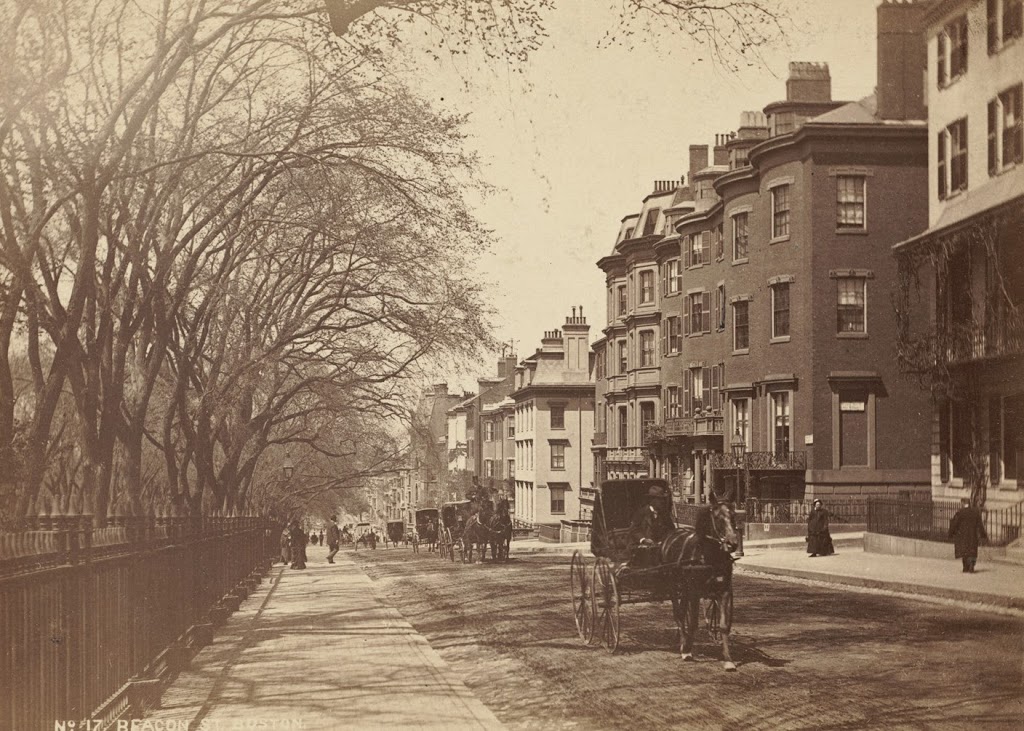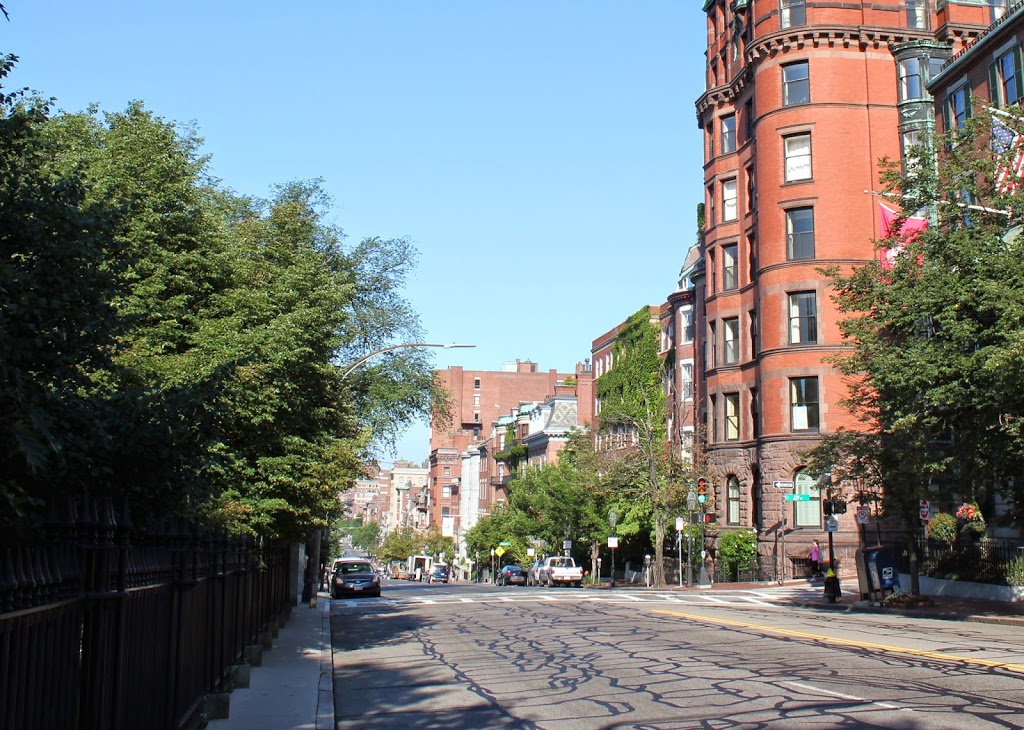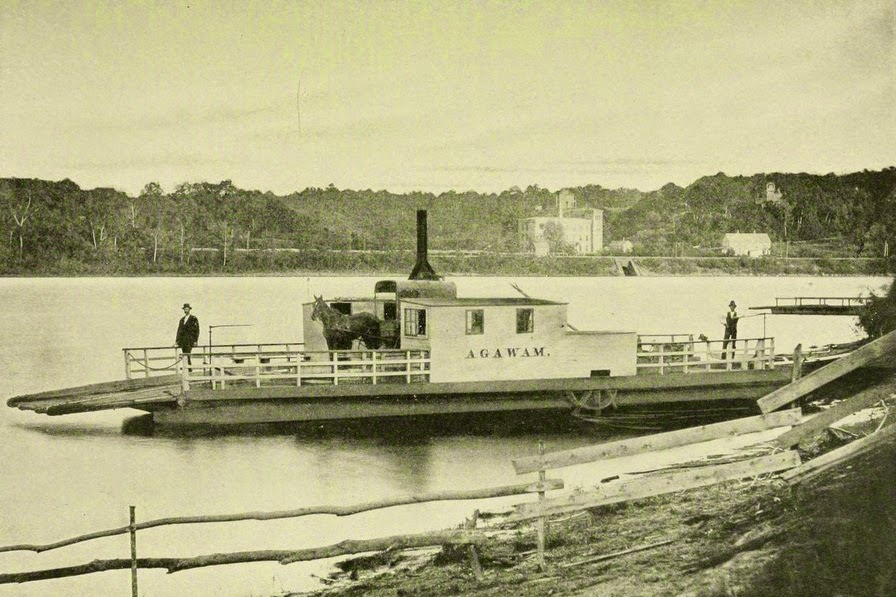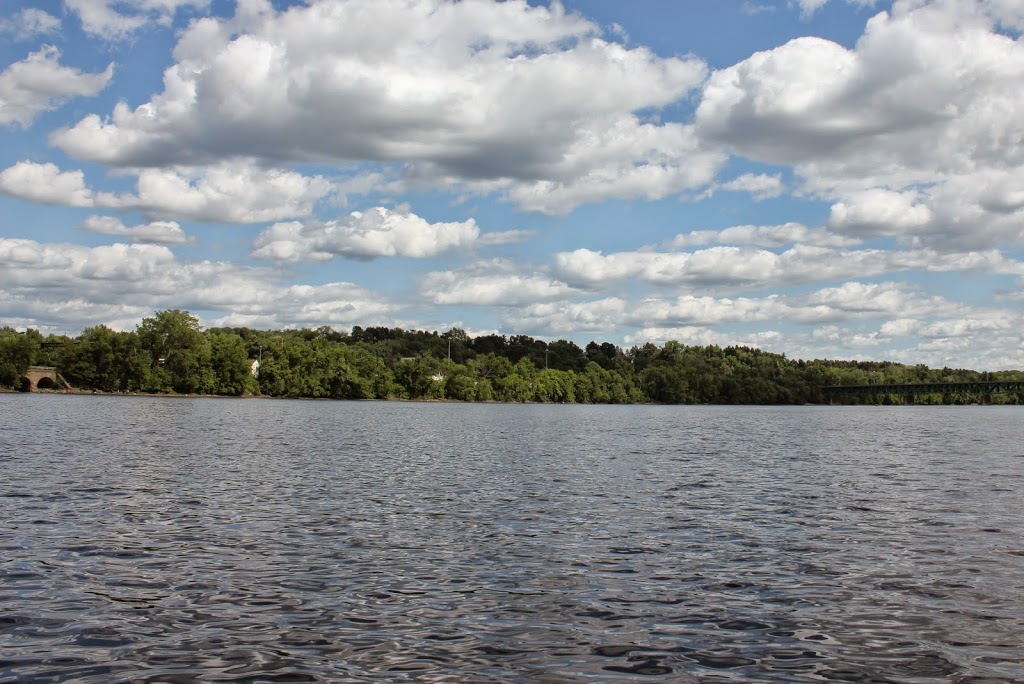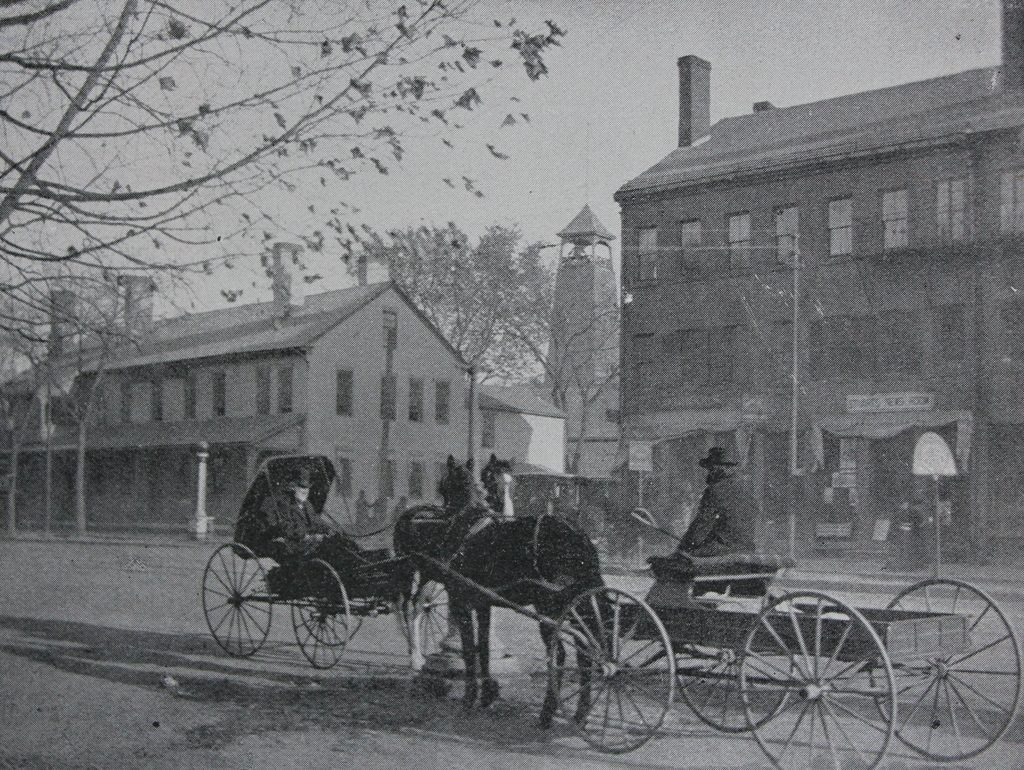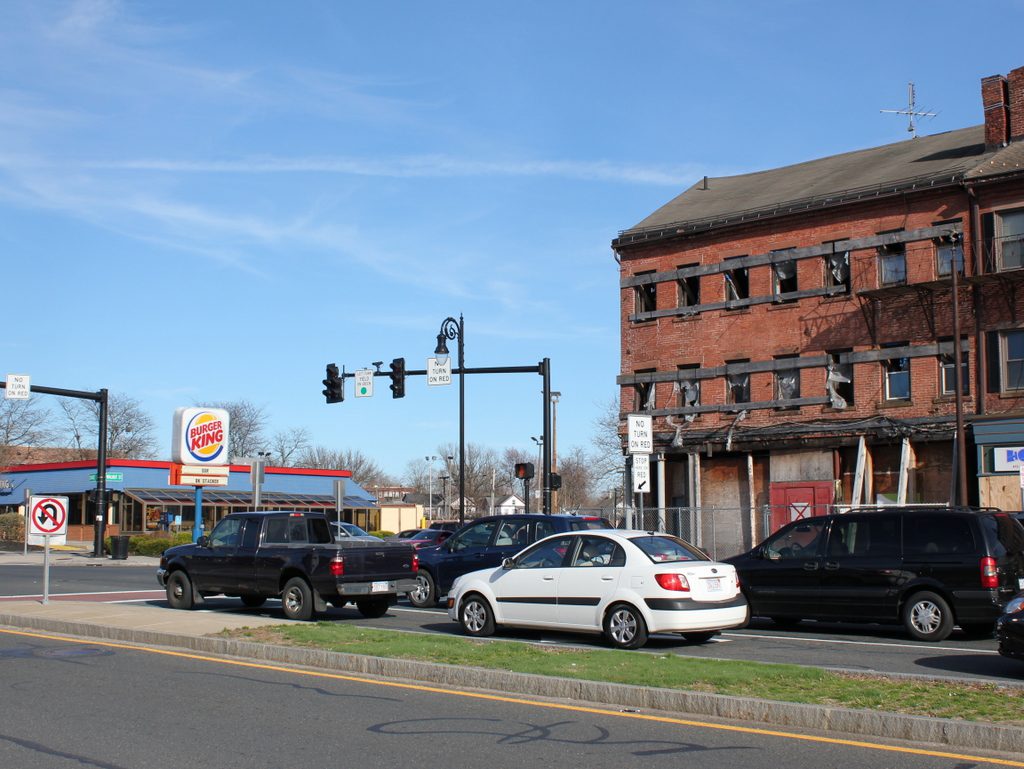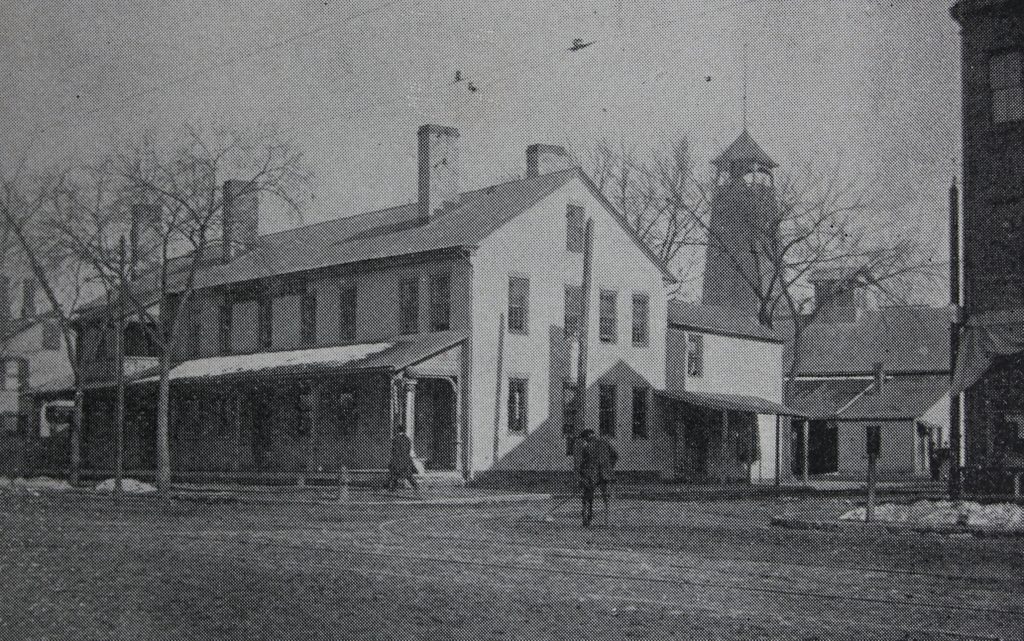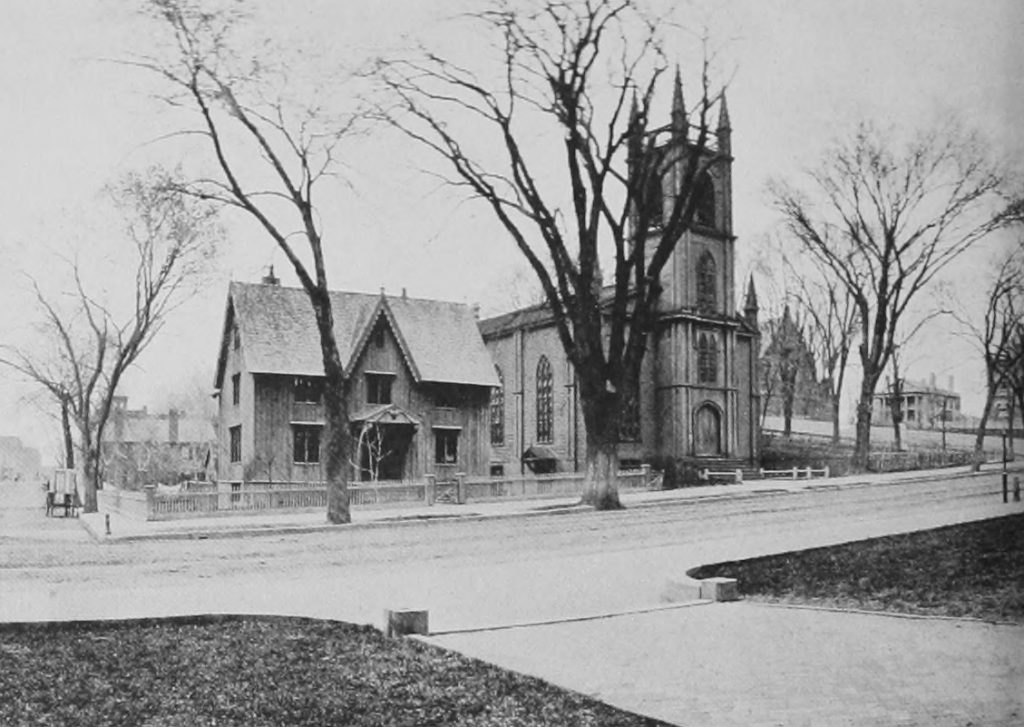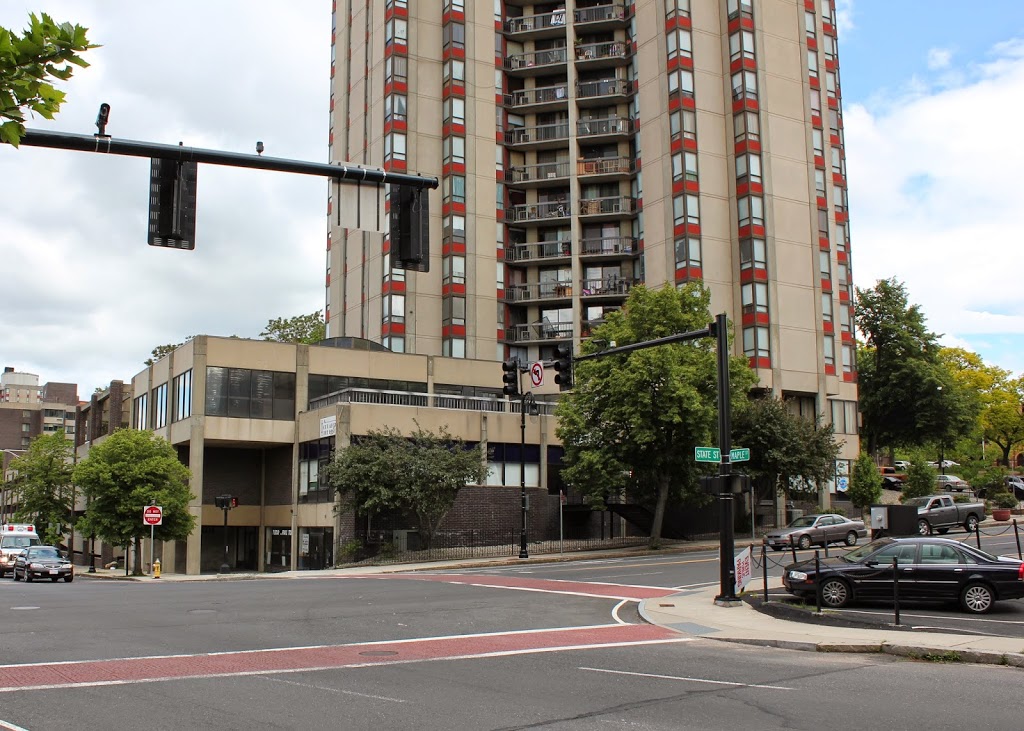Looking west on Beacon Street in Boston, near the State House, sometime in the 19th century. Photo courtesy of Boston Public Library.
The same scene in 2014:
These views show Beacon Street looking down the hill, just past the Massachusetts State House (the State House would be behind and to the left from this angle). The street to the right in the foreground is Joy Street, and Boston Common is to the left.
Ever since Beacon Hill was developed in the early 1800s, it has been a wealthy neighborhood, and given its location adjacent to the State House, it has been the home of a number of prominent politicians over the years. Aside from wider, paved streets, and automobiles instead of horse-drawn carriages, not much has changed with the appearance of the neighborhood. The streets are still lined with brick townhouses, and many of the ones from the first photo (which I suspect was probably taken around the 1860s-1870s) are still around today, including the one on the far right in the foreground, and the one in approximately the center of the 19th century photo, which is partially obscured by trees in the 2014 photo.

